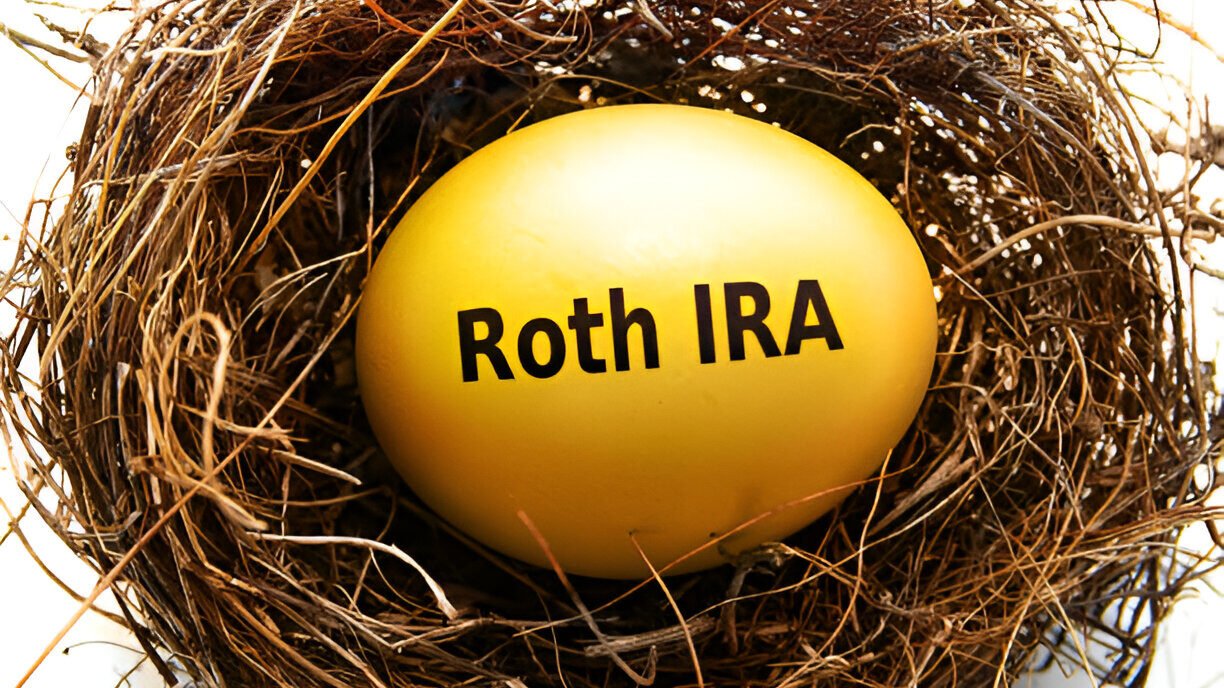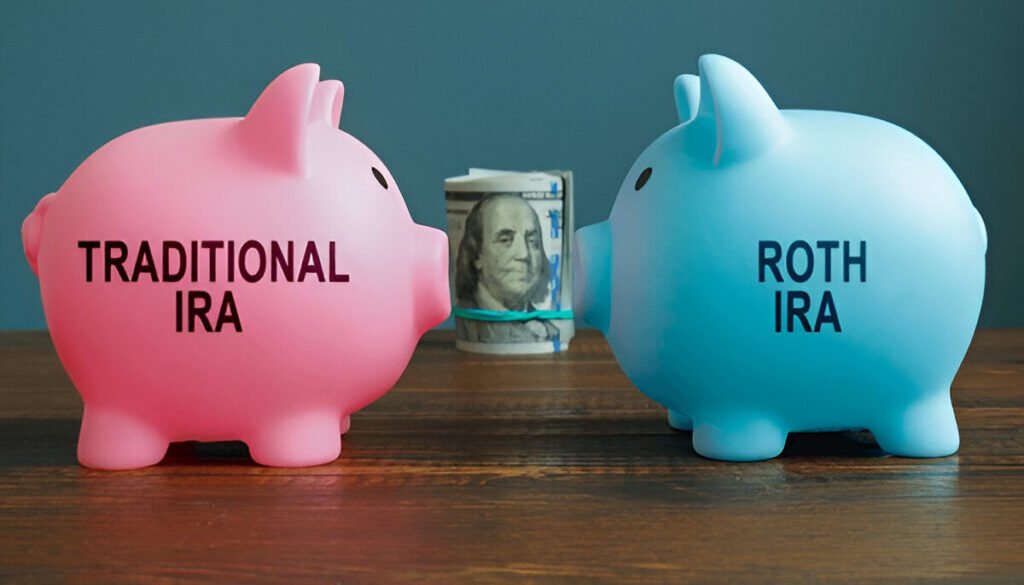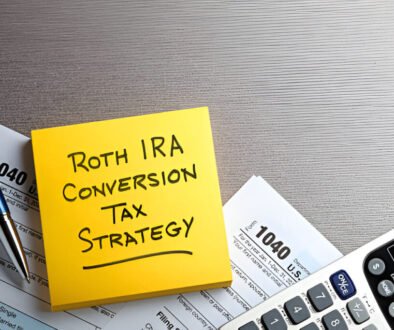Roth IRA vs 401k for self-employed individuals
Roth IRA vs 401k for self-employed individuals—what’s the better fit? Compare contribution limits, tax rules, and long-term benefits to make the right choice
Ever sat staring at your retirement options feeling like you’re decoding hieroglyphics? You’re not alone – 68% of Americans find choosing between a Roth IRA vs 401k more stressful than picking a Netflix show after dinner.
I’m about to make this ridiculously simple for you in the next 5 minutes.
The truth? Both retirement accounts can make you wealthy, but picking the wrong one for your situation is like wearing flip-flops in a snowstorm – technically possible but painfully inefficient.
By the end of this post, you’ll know exactly which account deserves your hard-earned dollars first, second, and (plot twist) why the smartest investors don’t actually choose between them at all.
The Fundamentals of Retirement Accounts
What is a Roth IRA: Key Features and Benefits

Want to pay taxes now and enjoy tax-free withdrawals later? That’s the Roth IRA in a nutshell.
Unlike traditional retirement accounts, you fund a Roth with after-tax dollars. The major perk? Your money grows tax-free, and you won’t pay a dime in taxes when you withdraw in retirement. It’s like your future self getting a massive discount.
You can also tap into your contributions (not earnings) anytime without penalties. Need cash for an emergency? Your contributions are accessible without the tax drama that comes with other retirement accounts.
Income limits do apply though. For 2025, if you’re single with a modified AGI over $161,000, your ability to contribute starts phasing out. Married filing jointly? The phase-out begins at $240,000.
Another sweet feature – no required minimum distributions (RMDs) during your lifetime. Your money can keep growing tax-free for as long as you want.
Understanding 401(k) Plans: Employer-Sponsored Advantages
A 401(k) is basically free money – if your employer offers a match.
These employer-sponsored plans let you contribute directly from your paycheck before taxes take a bite. Many employers will match your contributions up to a certain percentage – that’s literally free money for your retirement.
The automatic payroll deductions make saving painless – you never see the money, so you never miss it. And with higher contribution limits than IRAs, 401(k)s allow you to sock away serious cash for retirement.
Many plans now offer loan provisions too. While borrowing from retirement isn’t ideal, it’s nice to know you can access your money if you’re truly in a bind.
The biggest downside? Limited investment options. Unlike IRAs where you can invest in almost anything, your 401(k) typically offers a menu of pre-selected funds.
Tax Treatment: The Critical Difference Between Roth IRAs and 401(k)s
This is where the rubber meets the road in your retirement planning.
Traditional 401(k)s give you a tax break today. Your contributions reduce your current taxable income, which means smaller tax bills now. But when retirement rolls around, Uncle Sam will tax every dollar you withdraw as ordinary income.
Roth IRAs flip the script. You pay taxes on contributions now, but qualified withdrawals in retirement – including all that sweet investment growth – come out completely tax-free.
Think about it this way:
- 401(k): Tax discount now, tax bill later
- Roth IRA: Tax bill now, tax-free later
Your choice often comes down to a simple question: Do you expect to be in a higher tax bracket now or in retirement?
If you’re early in your career with plenty of earning potential ahead, a Roth often makes more sense. If you’re in your peak earning years, the immediate tax savings of a 401(k) might be more valuable.
Contribution Limits for 2025: Maximizing Your Options
The 2025 limits give you plenty of room to build your nest egg.
For 401(k)s, you can contribute up to $23,500 if you’re under 50. Over 50? You get an extra $7,500 catch-up contribution, bringing your total to $31,000.
Roth IRAs have more modest limits. You can contribute up to $7,000 if you’re under 50, or $8,000 if you’re 50+.
But here’s where it gets interesting – you don’t have to choose! You can contribute to both a 401(k) and a Roth IRA in the same year (income limits permitting).
This combo approach gives you:
- Immediate tax benefits from the 401(k)
- Tax-free growth potential from the Roth
- Greater overall contribution capacity
- Flexibility in retirement withdrawals
The smartest move? If your employer offers a 401(k) match, contribute at least enough to get the full match. Then, if you can save more, consider directing additional funds to a Roth IRA for tax diversification.
Contribution Strategies for Financial Growth
A. Income Limitations: Who Can Contribute to Each Account
Your ability to contribute to retirement accounts isn’t unlimited – the government has some rules about who gets to put how much money where.
For 401(k)s, there’s actually no income ceiling. You could make $50,000 or $5 million annually – you’re still eligible to contribute. In 2025, you can sock away up to $23,500 in your 401(k), regardless of how much you earn.
Roth IRAs work differently. As of 2025, you can only make the full $7,000 contribution if your modified adjusted gross income (MAGI) is under $146,000 (single) or $230,000 (married filing jointly). Beyond those thresholds, your contribution limit starts shrinking until it disappears completely at $161,000 (single) or $240,000 (married).
This table breaks it down:
| Account Type | Income Limitations | 2025 Contribution Limit |
| 401(k) | None | $23,500 |
| Roth IRA | Phases out starting at $146K (single)/$230K (married) | $7,000 |
B. Employer Matching: Free Money You Shouldn’t Ignore
Think your employer 401(k) match isn’t a big deal? Think again.
When your company offers to match your 401(k) contributions, they’re literally handing you free money. A typical match might be 50% of what you contribute, up to 6% of your salary. So if you make $80,000 and contribute 6% ($4,800), your employer kicks in another $2,400. That’s an immediate 50% return!
Roth IRAs don’t offer employer matching since they’re individual accounts you set up outside of work. This is one clear advantage 401(k)s have over Roth IRAs.
The smartest approach? Contribute enough to your 401(k) to get your full employer match before funding other retirement accounts. Walking away from matching contributions is like leaving free money on the table – and who does that?
C. Catch-up Contributions for Investors Over 50
Turning 50 brings some perks to your retirement saving game. The government recognizes you’re in the home stretch toward retirement and lets you put away extra cash.
For 401(k)s, people 50+ can contribute an additional $7,500 on top of the standard $23,500 limit in 2025. That’s a total of $31,000 you can stash away tax-advantaged each year.
Roth IRA catch-up contributions are more modest but still helpful – an extra $1,000 above the regular $7,000 limit, bringing your total to $8,000 annually.
These catch-up provisions can significantly boost your retirement savings in your final working years. The extra $7,500 in a 401(k), invested over 15 years with a 7% return, could add roughly $180,000 to your retirement nest egg!
D. Dollar-Cost Averaging vs. Lump Sum Investing in Both Accounts
Got money to invest but worried about market timing? You’ve got options.
Dollar-cost averaging (DCA) means investing fixed amounts at regular intervals – like your biweekly 401(k) contributions from your paycheck. The beauty is you automatically buy more shares when prices are low and fewer when they’re high. This approach works identically in both 401(k)s and Roth IRAs.
Lump sum investing means putting a chunk of money to work all at once. Research from Vanguard shows this approach has historically outperformed DCA about two-thirds of the time, simply because markets tend to rise over time.
The practical difference between these accounts? 401(k)s naturally lend themselves to DCA through regular paycheck deductions. Roth IRAs often get funded with annual lump sums (like tax refunds or year-end bonuses).
The right approach depends more on your psychology than the account type. DCA helps you sleep at night during market volatility, while lump sum investing maximizes your long-term growth potential.
E. Backdoor Roth IRA: A Strategy for High-Income Earners
Making too much money for a Roth IRA? There’s a perfectly legal workaround.
The backdoor Roth IRA strategy lets high-income earners sidestep those pesky income limits. Here’s how it works:
- Contribute to a traditional IRA (which has no income limits for contributions, though deductibility may be limited)
- Convert that traditional IRA to a Roth IRA soon after
- Pay income tax on any pre-tax contributions and earnings
This strategy works best when you have no existing traditional IRA balances (due to the “pro-rata rule” that can create unexpected tax consequences).
High earners with 401(k)s have another option too: the mega backdoor Roth. If your 401(k) plan allows after-tax contributions beyond the standard limits and in-plan Roth conversions, you could potentially funnel up to $46,500 extra (2025 figure) into Roth accounts annually.
These backdoor strategies require careful execution to avoid tax pitfalls, but they’re powerful tools for high-income folks who want those sweet, sweet tax-free Roth withdrawals in retirement.
Investment Options and Control
Self-Directed Investment Choices in Roth IRAs
When you open a Roth IRA, you’re basically getting the keys to your own investment kingdom. Unlike some retirement accounts where someone else picks your investments, Roth IRAs let you call the shots.
With a Roth IRA, you can invest in:
- Individual stocks (from Apple to Zoom)
- Bonds (government, corporate, municipal)
- ETFs and mutual funds
- Real estate investment trusts (REITs)
- Certificates of deposit (CDs)
Some brokerages even allow alternative investments like precious metals or private company shares. This freedom means you can tailor your portfolio exactly how you want it – aggressive when you’re younger, more conservative as you approach retirement.
Typical Investment Options in 401(k) Plans

Your 401(k) plan? It’s more like choosing from a set menu rather than the full grocery store.
Most 401(k) plans offer:
- A selection of mutual funds (typically 15-25 options)
- Target-date funds based on your retirement year
- Company stock (sometimes)
- Money market funds
The options are pre-selected by your employer and plan administrator. While this simplifies decisions, it also limits your choices. You might find yourself stuck with underperforming funds or higher expense ratios than you’d prefer.
Fee Structures and Their Long-term Impact on Returns
Fees might seem small now, but they’re silently eating away at your retirement.
| Account Type | Typical Fee Range | Impact on $100K over 30 years* |
| Roth IRA | 0.1% – 0.5% | $10,000 – $46,000 lost |
| 401(k) | 0.5% – 1.5% | $46,000 – $120,000 lost |
*Assuming 7% annual returns
Many 401(k) plans charge administrative fees on top of fund expenses. These can range from 0.2% to 1% annually. Meanwhile, savvy Roth IRA investors can build portfolios with rock-bottom fees using low-cost index funds or ETFs.
The difference? An extra vacation home in retirement.
Portfolio Diversification Strategies Across Both Accounts
Smart investors don’t put all their eggs in one basket – they use both accounts strategically.
A winning approach is treating your retirement accounts as one big portfolio:
- Use your 401(k) for the best funds it offers (especially if there are any low-fee index options)
- Fill gaps with your Roth IRA investments
- Consider holding more growth-oriented investments in your Roth (since gains are tax-free)
- Keep income-generating investments in your 401(k)
For example, if your 401(k) has a great S&P 500 index fund but terrible international options, use your Roth IRA to invest in international markets. This strategy lets you minimize fees while maximizing diversification.
By strategically allocating investments across both accounts, you’re getting the best of both worlds – employer matching in your 401(k) and tax-free growth in your Roth IRA.
Withdrawal Rules and Flexibility
Early Withdrawal Penalties and Exceptions
Thinking about tapping into your retirement funds early? You might face some serious financial consequences.
With a 401(k), early withdrawals (before age 59½) typically get hit with a 10% penalty plus income taxes on the withdrawn amount. Ouch.
Roth IRAs offer more flexibility. You can withdraw your contributions (not earnings) at any time without penalties or taxes. That’s because you’ve already paid taxes on that money.
Roth IRA vs 401k for self-employed individuals
But what if you’re in a bind? Both accounts have exceptions to early withdrawal penalties:
| Exception | 401(k) | Roth IRA |
| First-time home purchase | Generally no | Yes, up to $10,000 lifetime |
| Higher education expenses | Generally no | Yes |
| Medical expenses | Yes, if >7.5% of AGI | Yes, if >7.5% of AGI |
| Disability | Yes | Yes |
| SEPP withdrawals | Yes | Yes |
| COVID-related needs | Special provisions ended | Special provisions ended |
Required Minimum Distributions: Why Roth IRAs Have the Edge
The government wants its tax money eventually, which is why RMDs exist. But not all retirement accounts play by the same rules.
With traditional 401(k)s, you must start taking required minimum distributions at age 73 (as of 2025). Skip this, and you’re looking at a hefty 25% penalty on the amount you should have withdrawn.
Roth IRAs? They’re the clear winner here. Original account owners never have to take RMDs—ever. Your money can grow tax-free for as long as you live, making Roth IRAs ideal for legacy planning.
For Roth 401(k)s, RMDs were previously required, but thanks to SECURE Act 2.0, RMDs will be eliminated for Roth 401(k)s starting in 2024.
Loan Options: Borrowing from Your 401(k)

Need cash but don’t want to permanently tap your retirement savings? 401(k) loans might be your answer.
Most 401(k) plans let you borrow up to 50% of your vested balance (maximum $50,000). You’ll typically pay it back with interest over five years through payroll deductions.
The good news? You’re paying interest to yourself, not a bank. The bad news? If you leave your job before repaying, the outstanding balance might be treated as a distribution—triggering taxes and potential penalties.
Roth IRAs don’t offer loan options. Your choices are limited to either leaving the money alone or making a withdrawal (which might trigger taxes and penalties on earnings).
Emergency Access to Retirement Funds
Life happens, and sometimes you need money fast. How do your retirement accounts stack up in emergencies?
401(k) hardship withdrawals are possible for “immediate and heavy financial needs” like medical expenses, home repairs after disasters, or preventing eviction. But you’ll still pay income taxes and possibly that 10% early withdrawal penalty.
Roth IRAs shine in emergency situations. Since you can withdraw contributions anytime without penalties or taxes, they double as a backup emergency fund.
Some employers also offer 401(k) withdrawal options for specific hardships, but plan rules vary widely.
Tax Implications of Different Withdrawal Scenarios
When you withdraw money matters almost as much as where you withdraw it from.
In retirement (after 59½), traditional 401(k) withdrawals are taxed as ordinary income. This could push you into a higher tax bracket if you withdraw large amounts.
Qualified Roth IRA withdrawals (account open 5+ years and you’re 59½+) are completely tax-free. This is huge for tax planning in retirement.
Early withdrawals create different tax scenarios:
- Traditional 401(k): Income tax + 10% penalty on full amount
- Roth IRA: No tax or penalty on contributions; income tax + 10% penalty on earnings (unless exceptions apply)
Smart withdrawal strategy? Many financial advisors suggest tapping taxable accounts first, then traditional retirement accounts, saving Roth accounts for last to maximize tax-free growth.
Strategic Account Selection for Different Life Stages
A. Early Career: Building the Foundation
When you’re just starting out, every dollar counts. Your early career is the perfect time to take advantage of the magic of compound interest, which basically means the earlier you start investing, the more your money can grow.
For most young professionals, a Roth IRA makes incredible sense. Why? You’re probably in a lower tax bracket now than you will be later. Paying taxes on your contributions today (which is how Roth IRAs work) means you’ll likely pay less in taxes overall.
But don’t ignore that 401(k) match if your employer offers one! Turning down matching contributions is like saying no to free money. At minimum, contribute enough to get the full match.
Here’s a quick comparison for early career folks:
| Account Type | Best For | Why It Works |
| Roth IRA | Primary focus if low income | Tax-free growth when income (and tax rates) are low |
| 401(k) | Up to employer match | Instant 100% return on your money through matching |
The numbers don’t lie: If you start investing $6,000 annually in a Roth IRA at age 25 instead of age 35, you could have about $320,000 more by retirement (assuming 7% annual returns).
B. Mid-Career: Balancing Tax Advantages
Mid-career is when things get interesting. Your salary has probably jumped up a few tax brackets, and suddenly those tax deductions from traditional 401(k) contributions look pretty appealing.
This is when many professionals shift their strategy. Your 401(k) becomes increasingly valuable because:
- You’re in a higher tax bracket, making those pre-tax contributions more valuable
- Contribution limits are higher ($23,000 for 401(k)s vs $7,000 for IRAs in 2025)
- You’re likely earning too much to fully contribute to a Roth IRA directly
At this stage, your income might actually phase you out of Roth IRA eligibility. But don’t panic – there’s this thing called a “backdoor Roth” that lets you convert traditional IRA contributions to Roth, regardless of income.
Many mid-career professionals find success with this approach:
| Priority | Account | Amount |
| First | 401(k) | Up to full employer match |
| Second | Roth IRA/Backdoor Roth | Maximum contribution |
| Third | Back to 401(k) | Up to annual limit |
Your financial obligations are probably higher now too – maybe a mortgage, kids, or both. The tax deduction from 401(k) contributions can free up cash flow when you need it most.
C. Pre-Retirement: Maximizing Contributions
As retirement appears on the horizon, your savings strategy should kick into high gear. You’re likely at your peak earning years, which means:
- You have more money to save
- You’re probably in the highest tax bracket of your career
- You can take advantage of catch-up contributions
Speaking of catch-up contributions – once you hit 50, the IRS lets you contribute an extra $7,500 to your 401(k) and an extra $1,000 to your IRA annually as of 2025. This isn’t just a nice bonus – it’s a crucial opportunity to shore up your retirement savings.
Tax planning becomes super important during this phase. If you’ve primarily used traditional 401(k) funds throughout your career, you might want to balance things out with some Roth contributions to give yourself tax flexibility in retirement.
Many pre-retirees discover they’ve under-saved and need to make aggressive moves. Don’t be that person frantically trying to catch up. The math is brutal: waiting until your 50s to get serious about retirement means you’ve missed decades of compound growth.
D. Using Both Accounts: The Optimal Approach for Tax Diversity
Having both Roth and traditional retirement accounts is like having different clubs in your golf bag – each one serves a specific purpose.
Tax diversity gives you options in retirement. It lets you control your tax situation by strategically withdrawing from different accounts based on your tax situation each year.
Here’s what a balanced approach might look like:
| Income Source | Tax Treatment | Strategic Use |
| Traditional 401(k)/IRA | Taxable as ordinary income | Use in lower-income years |
| Roth accounts | Tax-free | Use in higher-income years |
| Social Security | Partially taxable | Minimize taxation with proper withdrawal strategy |
The real magic happens when you can pick and choose which account to tap in retirement. Have a year with higher medical expenses? Pull from your traditional accounts to offset those deductions. Planning a big vacation? Tap your Roth for tax-free funds.
Many financial advisors recommend the “tax bracket filling” strategy: withdraw just enough from traditional accounts to fill up lower tax brackets, then switch to Roth for additional needs.
Remember, retirement might last 30+ years. Tax laws will change. Having money in different tax buckets gives you flexibility no matter what Congress decides to do with tax rates in the future.
Account Portability and Job Transitions
Rolling Over a 401(k) to an IRA: When and Why
Job hopping is more common than ever these days. The average person changes jobs 12 times during their career. So what happens to your 401(k) when you move on?
Rolling your 401(k) into an IRA often makes a ton of sense. Here’s why you might want to do it:
- More investment options: Most 401(k)s limit you to 15-20 funds. With an IRA, you can invest in thousands of stocks, bonds, ETFs, and mutual funds.
- Lower fees: 401(k) plans frequently charge administrative fees that IRAs don’t have.
- Simplified management: Tired of tracking multiple accounts? Consolidating old 401(k)s into one IRA makes your financial life way easier.
The best time to roll over is typically when:
- You’re leaving your job
- Your 401(k) has high fees
- You want better investment choices
- You’re unhappy with your plan’s services
Just remember: don’t rush this decision if your old 401(k) has company stock, outstanding loans, or unique investment options not available elsewhere.
Direct Transfers vs. Indirect Rollovers: Avoiding Tax Pitfalls
The way you move your money matters – big time. Choose wrong and you could accidentally trigger a tax nightmare.
Direct transfers (trustee-to-trustee) are the no-headache option:
- Your money goes straight from your 401(k) to your IRA
- No taxes withheld
- No risk of missing deadlines
- No paperwork complications
Indirect rollovers are where people often mess up:
- Your old plan sends you a check
- 20% is automatically withheld for taxes
- You have just 60 days to deposit the FULL amount (including the withheld portion)
- Miss the deadline? The entire amount becomes taxable plus a 10% penalty if you’re under 59½
Here’s a quick comparison:
| Direct Transfer | Indirect Rollover |
| No money touches your hands | You receive a check |
| No taxes withheld | 20% mandatory withholding |
| Simple process | Must deposit full amount within 60 days |
| No risk of penalties | High risk of penalties if mishandled |
The choice is pretty obvious. Direct transfers win almost every time.
Managing Old 401(k) Accounts from Previous Employers
Got retirement accounts scattered across multiple past employers? You’re not alone. Many people have 401(k)s from previous jobs just sitting there, collecting dust.
You have several options:
1. Leave it where it is
This works if the plan has great investment options and low fees. But be careful – some plans charge higher fees for ex-employees or require minimum balances.
2. Roll it into your new employer’s plan
This can simplify things, but first check if your new plan accepts rollovers and compare investment options and fees.
3. Roll it into an IRA
Often your best bet for maximum control and potentially lower costs.
4. Cash it out
Almost always a terrible idea. You’ll pay taxes plus a 10% early withdrawal penalty if you’re under 59½.
A big warning: Some employers automatically cash out accounts under $5,000 when you leave. They might roll balances between $1,000-$5,000 into an IRA for you, but amounts under $1,000 could get sent as a check – triggering taxes and penalties if you don’t act quickly.
Take control of these orphaned accounts. Every forgotten 401(k) is a missed opportunity to optimize your retirement strategy.
Estate Planning Considerations
Inheritance Rules for Roth IRAs
Death isn’t something most of us like to think about, but planning ahead saves your loved ones major headaches. Roth IRAs have some serious advantages when it comes to passing money to your heirs.
Unlike traditional retirement accounts, Roth IRAs don’t have required minimum distributions (RMDs) during your lifetime. This means you can let that money grow tax-free for as long as you want and potentially leave a bigger nest egg behind.
When you pass away, your beneficiaries have options. Spouses who inherit your Roth IRA can treat it as their own by rolling it into their existing Roth IRA or establishing a new one. Non-spouse beneficiaries generally must withdraw the entire balance within 10 years of your death (thanks to the SECURE Act of 2019), but they won’t pay income tax on these distributions as long as the account was open for at least 5 years before your death.
The best part? Your heirs get all that money tax-free. The tax bill was already paid when you contributed, so your legacy passes unburdened by Uncle Sam.
Beneficiary Options for 401(k) Plans
401(k) plans play by different rules in the estate planning game.
When you die with money in your 401(k), the plan automatically pays out to whoever you named as your beneficiary – regardless of what your will says. This makes keeping your beneficiary designations updated absolutely crucial.
Spouses who inherit 401(k)s have the most flexibility. They can:
- Roll the money into their own retirement account
- Keep it in the plan (if the plan allows)
- Take it as a lump sum (though taxes will be due)
- Transfer to an inherited IRA
Non-spouse beneficiaries face more restrictions. They generally can’t roll the money into their own retirement accounts and must start taking distributions relatively quickly.
Many 401(k) plans also require non-spouse beneficiaries to take the money out in a lump sum or within five years, which can create a massive tax burden compared to the 10-year rule for inherited IRAs.
Tax Implications for Your Heirs
The tax consequences for your beneficiaries depend entirely on which account they’re inheriting.
With a traditional 401(k), your heirs will owe income tax on every dollar they withdraw. This can push them into higher tax brackets, especially if they’re forced to take large distributions over a short period.
Roth 401(k)s offer tax-free distributions to beneficiaries, similar to Roth IRAs, as long as the account has been open for at least five years.
Inherited Roth IRAs are the clear winner here – your beneficiaries pay zero income tax on distributions. This makes Roth accounts particularly valuable if you expect your heirs to be in high tax brackets when they inherit.
The timing of distributions also matters. Being forced to liquidate an account quickly (as with many 401(k) plans) can mean a much bigger tax hit than stretching distributions over several years.
Strategic Legacy Planning with Both Account Types
Smart estate planning often involves using both account types strategically.
Consider using Roth accounts for assets you’re unlikely to need during your lifetime. Since they don’t have RMDs while you’re alive, they can continue growing tax-free until they pass to your heirs.
For 401(k)s, think about rolling them into IRAs before you die if your plan has restrictive beneficiary rules. An IRA often provides more flexibility and longer distribution timeframes for your non-spouse heirs.
You might also designate different beneficiaries for different accounts based on their financial situations. A higher-income heir might benefit more from inheriting a Roth account, while a lower-income beneficiary might face less tax impact from a traditional 401(k).
For large estates, consider naming a charitable organization as beneficiary for pre-tax retirement accounts. The charity pays no income tax, maximizing the impact of your donation, while leaving Roth accounts to family members.
The bottom line: coordinating your retirement accounts with your overall estate plan ensures your hard-earned savings benefit your loved ones exactly as you intended.
Making the Right Choice for Your Financial Future
Your retirement planning strategy is deeply personal, influenced by your current financial situation, career trajectory, and long-term goals. Both Roth IRAs and 401(k)s offer distinct advantages—from the tax-free growth of Roth IRAs to the higher contribution limits and potential employer matches of 401(k)s. Understanding the differences in contribution strategies, investment options, withdrawal rules, and estate planning implications can significantly impact your financial security in retirement.
The ideal approach often involves incorporating both account types into your financial portfolio. Consider starting with your employer’s 401(k) up to the matching contribution, then diversifying with a Roth IRA for tax diversification benefits. As your career evolves and financial circumstances change, regularly reassess your retirement strategy with a financial advisor to ensure it continues to align with your goals. Remember, the most effective retirement plan is one that you consistently contribute to over time, regardless of which account type you choose.




401k vs Roth IRA for early retirement planning - GWI
August 8, 2025 @ 10:40 am
[…] will look like in retirement. We’re going to break down everything you need to know about 401k vs Roth IRA for early retirement planning, so you can make the smartest decision for YOUR […]